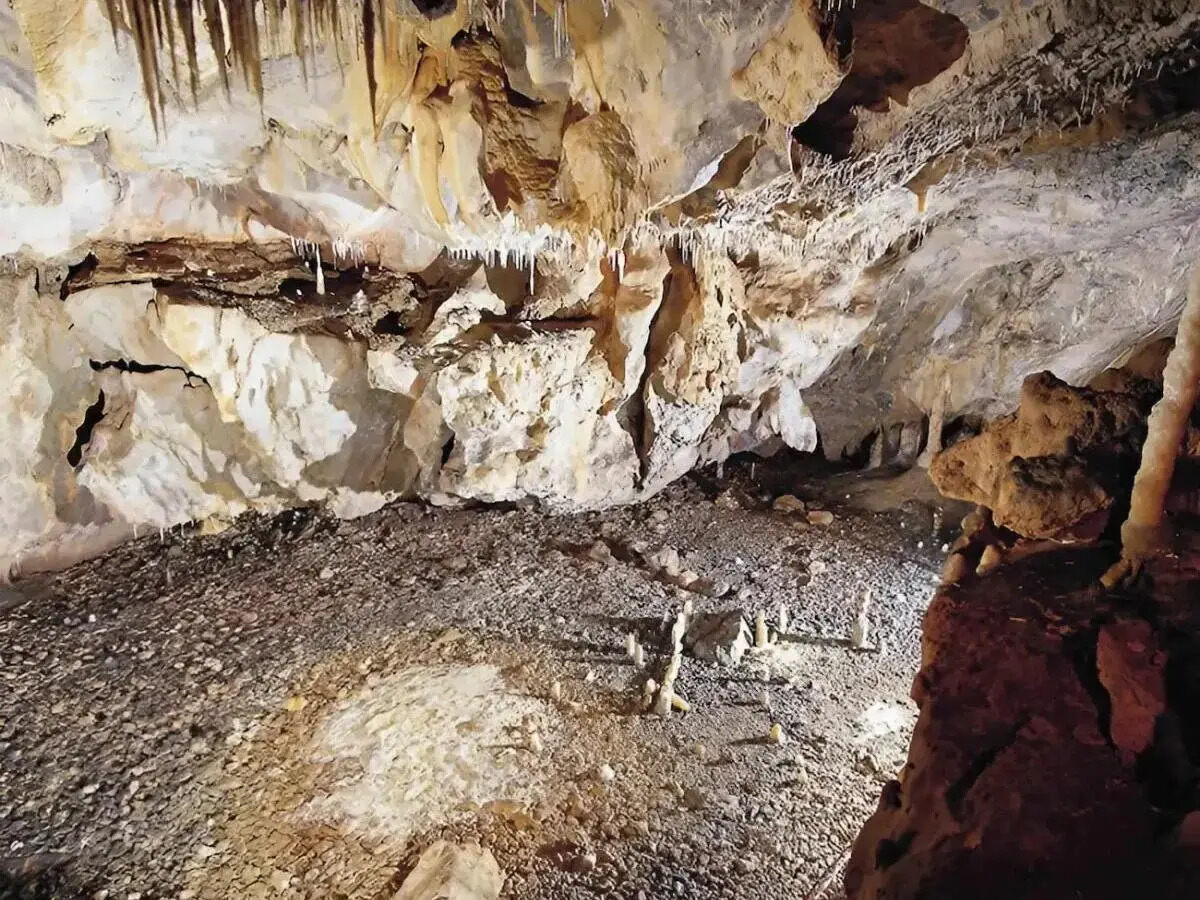
La Garma Cave is a treasure trove of prehistoric wonders nestled in the Cantabria region of Spain. This cave system, discovered in 1995, offers a unique glimpse into the lives of our ancient ancestors. Why is La Garma Cave so significant? It houses some of the most well-preserved Paleolithic art and artifacts, dating back over 16,000 years. From intricate cave paintings to ancient tools, La Garma provides invaluable insights into early human culture. But that's not all—this cave also contains evidence of long-term human habitation, making it a key site for understanding prehistoric life. Ready to dive into the fascinating world of La Garma Cave? Let's explore 35 intriguing facts that highlight its historical and cultural importance.
Key Takeaways:
- La Garma Cave in Spain holds 20,000 years of history, with ancient art, human remains, and environmental clues. It's a time capsule that helps us understand our prehistoric ancestors and their world.
- Ongoing research at La Garma Cave continues to uncover new insights into prehistoric life, with advanced technology and international collaboration driving the exploration. The cave's discoveries inspire education, culture, and a deeper connection to our past.
La Garma Cave: A Window to the Past
La Garma Cave, located in Cantabria, Spain, is a treasure trove of prehistoric artifacts and remains. This cave offers a unique glimpse into the lives of our ancient ancestors. Here are some fascinating facts about this remarkable site.
Discovery and Location
The cave's discovery and its geographical setting play a crucial role in understanding its significance.
- La Garma Cave was discovered in 1995 by a team of speleologists.
- It is situated in the Cantabrian Mountains, a region known for its rich prehistoric heritage.
- The cave is part of a larger karst system, which includes several other significant archaeological sites.
- Its entrance is located at an altitude of approximately 80 meters above sea level.
Archaeological Significance
The cave's archaeological importance cannot be overstated. It has provided invaluable insights into prehistoric life.
- La Garma Cave contains one of the best-preserved Paleolithic floors in Europe.
- Archaeologists have found evidence of continuous human occupation spanning over 20,000 years.
- The cave's stratigraphy includes layers from the Upper Paleolithic, Mesolithic, and Neolithic periods.
- It has yielded numerous artifacts, including tools, pottery, and ornaments.
Art and Symbolism
The cave is also renowned for its prehistoric art and symbolic significance.
- La Garma Cave features an extensive collection of cave paintings and engravings.
- The artwork includes depictions of animals such as bison, horses, and deer.
- Some of the paintings are estimated to be over 16,000 years old.
- The cave also contains numerous handprints and abstract symbols.
Human Remains and Burials
Human remains found in the cave provide a direct link to our ancestors.
- Several human skeletons have been discovered in La Garma Cave.
- These remains include both adults and children, offering insights into the demographics of prehistoric populations.
- Some of the burials are accompanied by grave goods, indicating ritualistic practices.
- The cave has also yielded evidence of cannibalism, a practice that was not uncommon in prehistoric times.
Environmental and Climatic Insights
The cave's deposits offer valuable information about past environments and climates.
- Pollen analysis from the cave's sediments has provided data on ancient vegetation and climate changes.
- The cave's stalagmites and stalactites contain isotopic records that help reconstruct past climatic conditions.
- Animal remains found in the cave indicate shifts in fauna due to climatic changes.
- The cave's sediments also contain charcoal deposits, suggesting the use of fire by its inhabitants.
Preservation and Conservation
Efforts to preserve and conserve La Garma Cave are crucial for future research.
- The cave is a UNESCO World Heritage Site, recognized for its outstanding universal value.
- Access to the cave is highly restricted to protect its delicate environment.
- Ongoing conservation efforts aim to prevent damage from natural and human factors.
- The cave's artifacts are carefully documented and stored in controlled environments.
Technological Advances in Research
Modern technology has revolutionized the study of La Garma Cave.
- 3D scanning and modeling have allowed researchers to create detailed digital replicas of the cave.
- Advanced dating techniques, such as radiocarbon dating, have provided precise timelines for the cave's occupation.
- DNA analysis of human and animal remains has revealed genetic information about prehistoric populations.
- Remote sensing technologies have helped identify previously unknown chambers and passages within the cave.
Educational and Cultural Impact
La Garma Cave has had a significant impact on education and culture.
- The cave is featured in numerous educational programs and documentaries.
- It serves as a valuable resource for teaching about prehistoric life and archaeology.
- The cave's discoveries have inspired various cultural works, including books and art.
- Local museums and exhibitions showcase artifacts from La Garma Cave, promoting public awareness.
Future Research and Exploration
The potential for future discoveries in La Garma Cave remains high.
- Ongoing excavations continue to uncover new artifacts and remains.
- Researchers are exploring deeper layers of the cave to find older evidence of human occupation.
- Collaborative international projects aim to further our understanding of La Garma Cave and its significance in human history.
Final Glimpse at La Garma Cave
La Garma Cave holds a treasure trove of prehistoric wonders. From its ancient cave paintings to the well-preserved artifacts, this site offers a unique window into the lives of our ancestors. The cave's complex structure and varied chambers reveal much about the rituals and daily activities of early humans. Its remarkable preservation allows researchers to study climate changes and human evolution over thousands of years. La Garma isn't just a historical site; it's a living museum that continues to educate and inspire. Whether you're a history buff or just curious, this cave is a must-see. So next time you're in Spain, don't miss the chance to explore this incredible piece of history. It’s a journey back in time you won’t forget.
Frequently Asked Questions
Was this page helpful?
Our commitment to delivering trustworthy and engaging content is at the heart of what we do. Each fact on our site is contributed by real users like you, bringing a wealth of diverse insights and information. To ensure the highest standards of accuracy and reliability, our dedicated editors meticulously review each submission. This process guarantees that the facts we share are not only fascinating but also credible. Trust in our commitment to quality and authenticity as you explore and learn with us.


